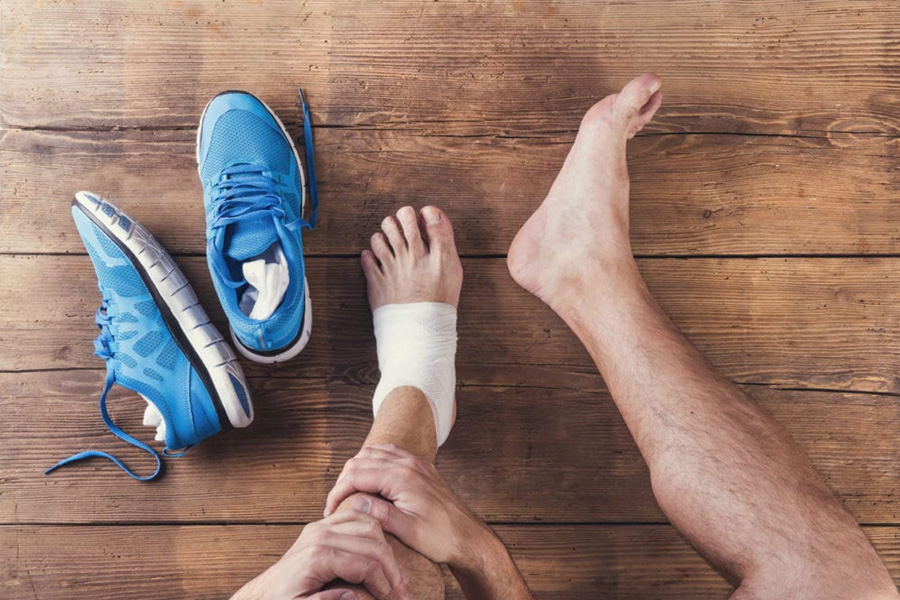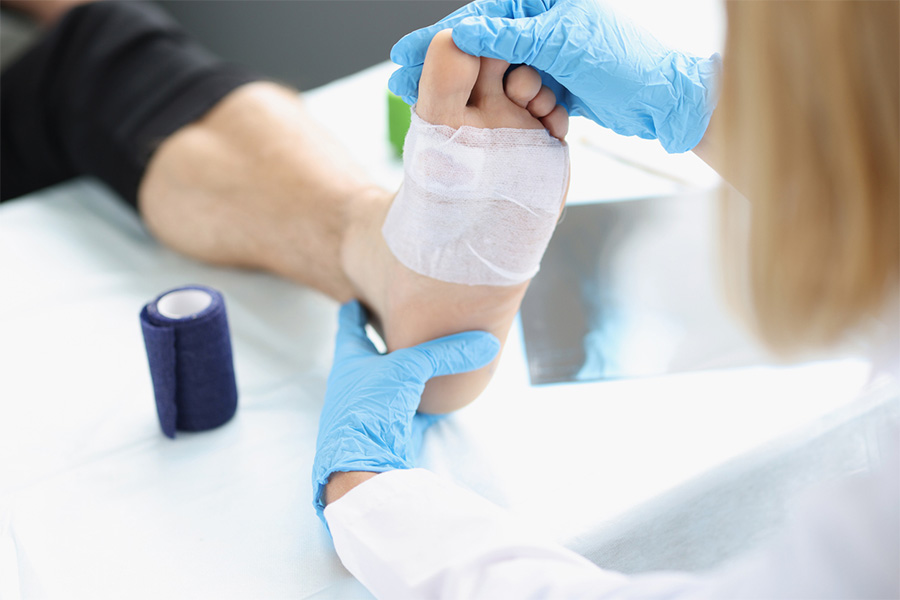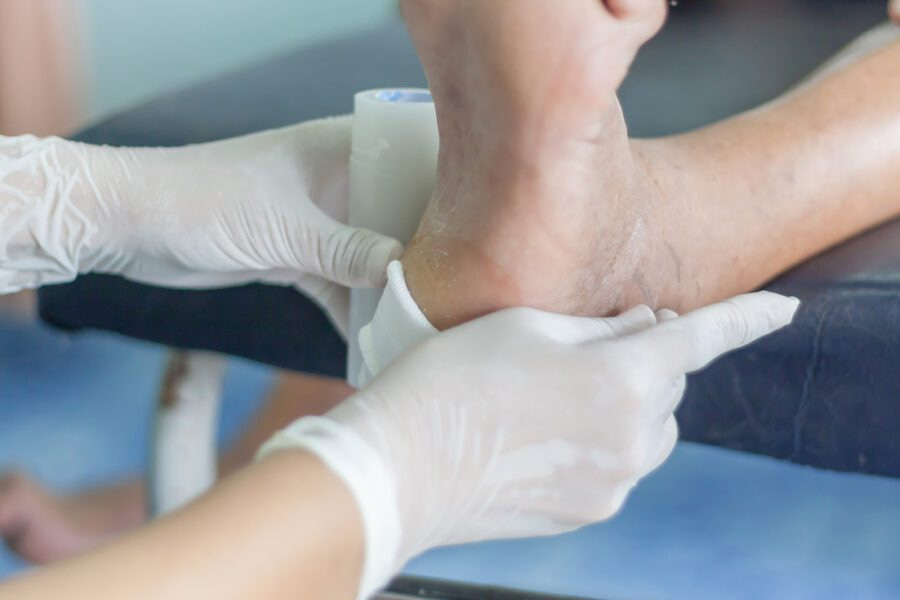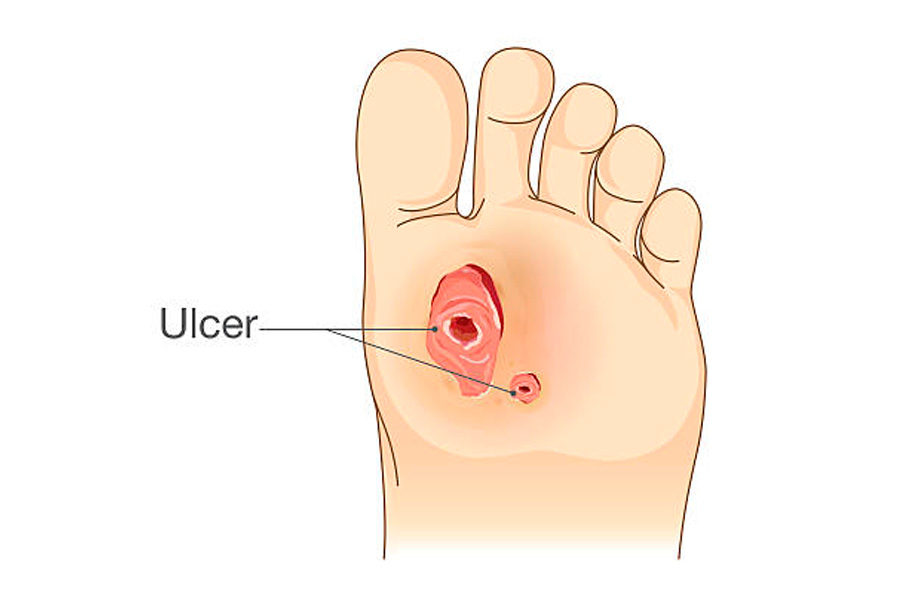If you’re diabetic, you know how important daily foot care is. Still, sometimes wounds or ulcers can form on the legs, ankles, and feet. With good care, these wounds can heal. Here’s what your podiatrist wants you to know about diabetic wound healing and prevention.
What Causes Diabetic Wounds?
Annually, approximately 15 percent of Americans with diabetes will develop wounds on the lower extremities. The causes differ from patient to patient; however, three main factors underpin almost all diabetic, or neurotrophic, wounds:
- Impaired peripheral circulation
- Poor nerve function, or peripheral neuropathy
- High blood glucose levels
These factors lead to infection, tissue ulceration, callus formation, and ultimately tissue death when a wound is left untreated. When tissue death, or gangrene, sets in, amputation is the usual result.
What Actions Can Heal Diabetic Wounds?
Quick action results in better and faster healing and helps avoid surgical intervention. Here is your podiatrist’s basic guide to healing diabetic wounds.
Offload Weight From The Foot
Most diabetic wounds develop on the sole of the foot or on/between the toes. To improve wound healing, the affected limb should be elevated, and as the wound improves, cast or fitted with a diabetic boot. These interventions keep undue pressure off the ulcer.
Debride Compromised Tissue And Reduce Swelling
Your Cincinnati foot doctor will remove any dead, macerated, or callused tissue to achieve the healthiest wound margins possible. Also, they will clean the wound, apply medication as warranted, and bandage the wound. Some wounds may fare better left open to the air, particularly if they drain. Do not use soaks or any kind of water therapy.
Also, your foot doctor may ask you to keep your foot elevated to reduce edema or swelling. Be sure to take any prescribed antibiotics as directed.
Improve The Peripheral Circulation
Your podiatrist will evaluate the blood circulation in your feet with an in-office PADnet test. This painless test tells the foot doctor if you have blood vessel blockages and to what degree. Some patients require a consultation with a cardiologist or other vascular specialist to improve blood flow.
Also, if you smoke, you must stop. Cigarettes cause the small blood vessels in the feet to die off, and smoking increases the sticky plaque that blocks the major arteries in the heart and other areas of the body. Ask your primary care physician for help with this important health goal.
Control Blood Sugars
Anything consistently higher than 180 increases your chances of developing foot ulcers. Watch your diet carefully. Take your diabetic medications as prescribed. Stay as active as possible to keep your blood sugar from rising too much.
How Can I Prevent Diabetic Wounds?
Basic daily foot care benefits everyone, but diabetics in particular. Here are some helpful tips to keep your feet healthy and wound-free.
- Wash your feet daily with soap and warm water, and dry them thoroughly, particularly between the toes.
- Inspect your feet for any cuts, scrapes, corns, calluses, bruising, or pressure points.
- Wear clean socks daily, and change them when sweaty.
- Wear well-constructed, properly-fitting shoes. Never walk barefoot, even indoors.
- Exercise as much as tolerable every day.
- Maintain healthy body weight.
- Don’t drink alcohol excessively.
- Don’t smoke.
- See your foot doctor in Cincinnati at least once every three months for a comprehensive podiatric exam.
We’re Here to Help
At Cincinnati Foot and Ankle Care, our team of podiatrists and support professionals provide expert diabetic foot care to patients of all ages. We want you as mobile and comfortable as possible and to avoid complications stemming from diabetes.
Contact one of our 18 locations today for a convenient and informative consultation. Or, you may use our online appointment request form. Never hesitate to call us right away with any concerns about your diabetic foot care.
Share

People with diabetes often experience difficulty healing wounds.




